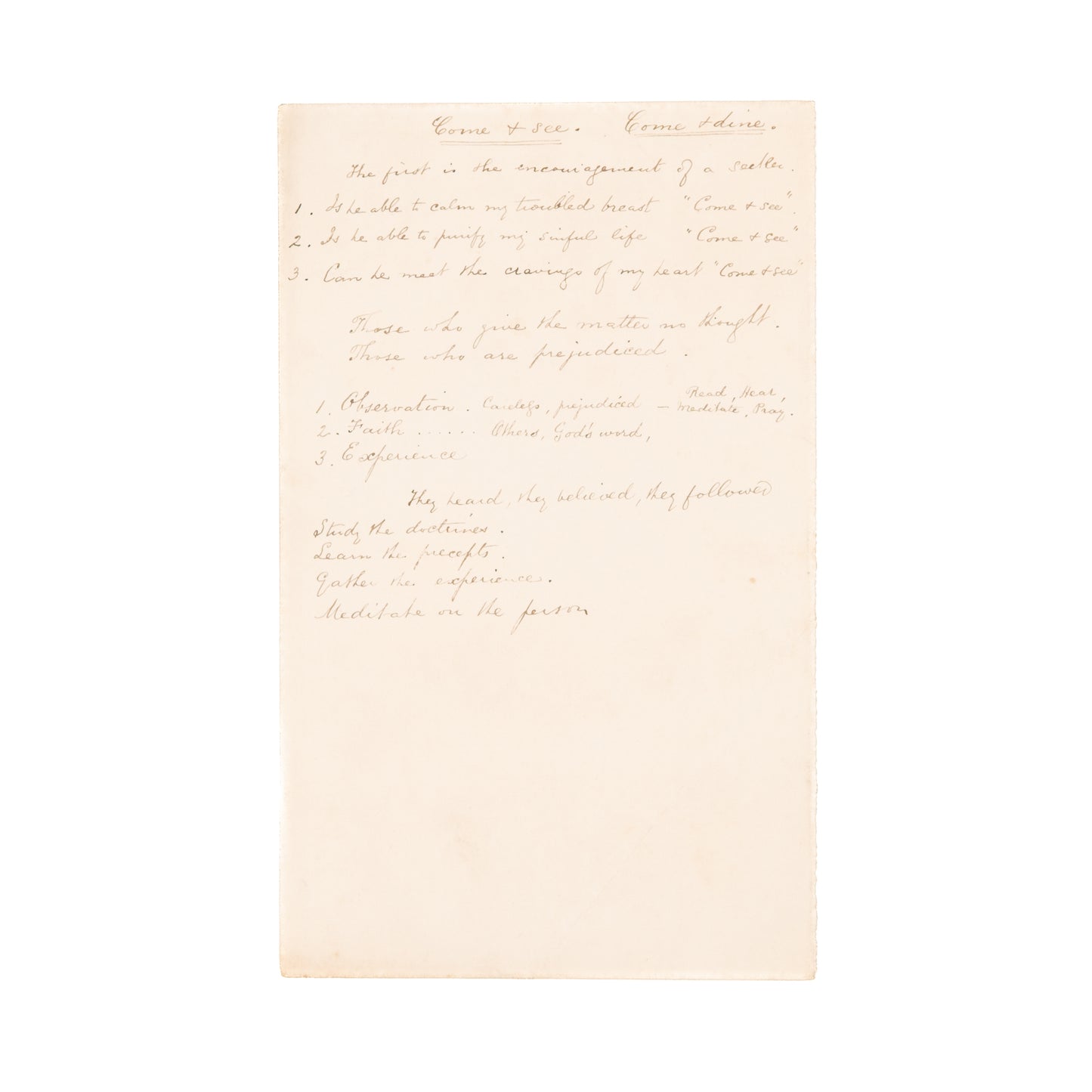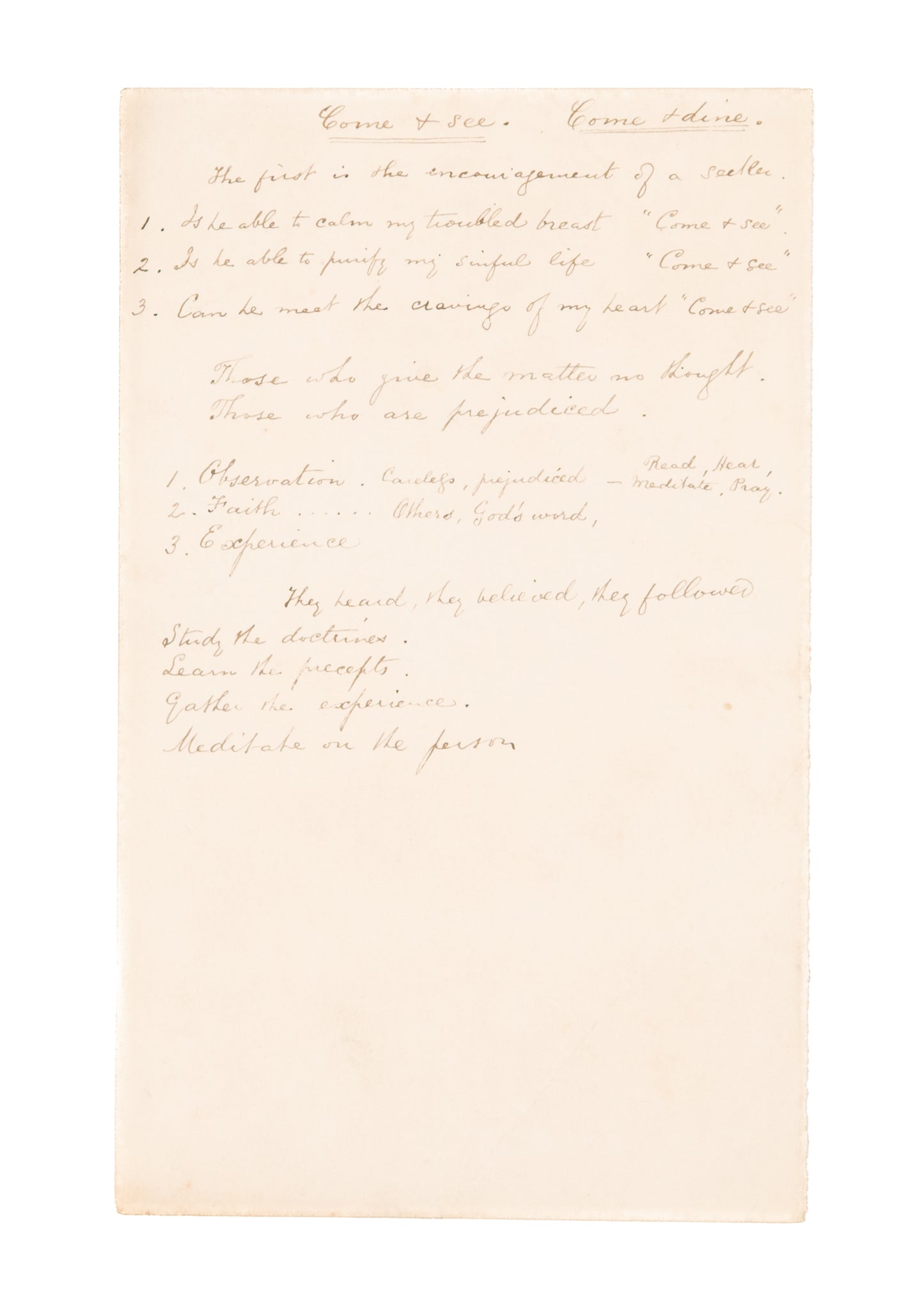Specs Fine Books
1880's C. H. SPURGEON. An Original Spurgeon Pulpit-Used Sermon Outline on Experimental Knowledge of Jesus.
1880's C. H. SPURGEON. An Original Spurgeon Pulpit-Used Sermon Outline on Experimental Knowledge of Jesus.
Couldn't load pickup availability
A very scarce piece of Spurgeonalia. When Spurgeon first began preaching, he wrote his sermons out in a nearly complete manuscript. By the 1860's, he had moved to more full notes than manuscript. By the 1870's he was down to a single or double-sided sheet or notecard.
In light of his heavy demands, he found it more important to invest in preparing the preacher than that which was to be preached. So he read voraciously, studied extensively, and prayed. By his own account, this process was forced on him because of the demands of his preaching schedule rather than by choice. Spurgeon often preached 5 times per week or more. It was simply impossible to prepare full MSs for each event.
The original, pulpit-used sermon notes of Spurgeon are among the most desirable pieces of Spurgeonalia extant. We have handled a handful over the last 30 years. During the same time, we have probably handled close to 100 letters, and thousands of sermon revision pages, which do contain some of his own notes. But complete, "this is what he preached from" sermons are very rare.
The present, a single sided sermon note, thus perfect for framing, is his pulpit notes to be used for one of his favorite texts, or pairing of texts, i.e. John 1.39's "Come and see . . . " juxtaposed with John 21.12's "Come and dine. . ."
His first recorded use of this pairing was in a sermon preaching at Newington in 1865 entitled Two Loving Invitations. It was then used in a shorter form used as a devotion in Spurgeon's daily devotional.
The first text was preached on in 1870, the second again in 1889.
In the present outline, apparently for an unpublished event, Spurgeon uses the "Come and see" as the language of seekers and those new or immature in the faith, and contrasts it with the beauty and meaningfulness of the experimental knowledge of Jesus found in John's later recorded words of Jesus, "Come and dine."
Likely for an away speaking engagement as it is an unusually spare and from its lack of appearance in the MTP. This would also be supported by the lack of hymn notes at the end, which he seems always to have indicated when preaching at the Tabernacle.
A perfect, one-sided framing example. Small fold across lower right corner.
Share




